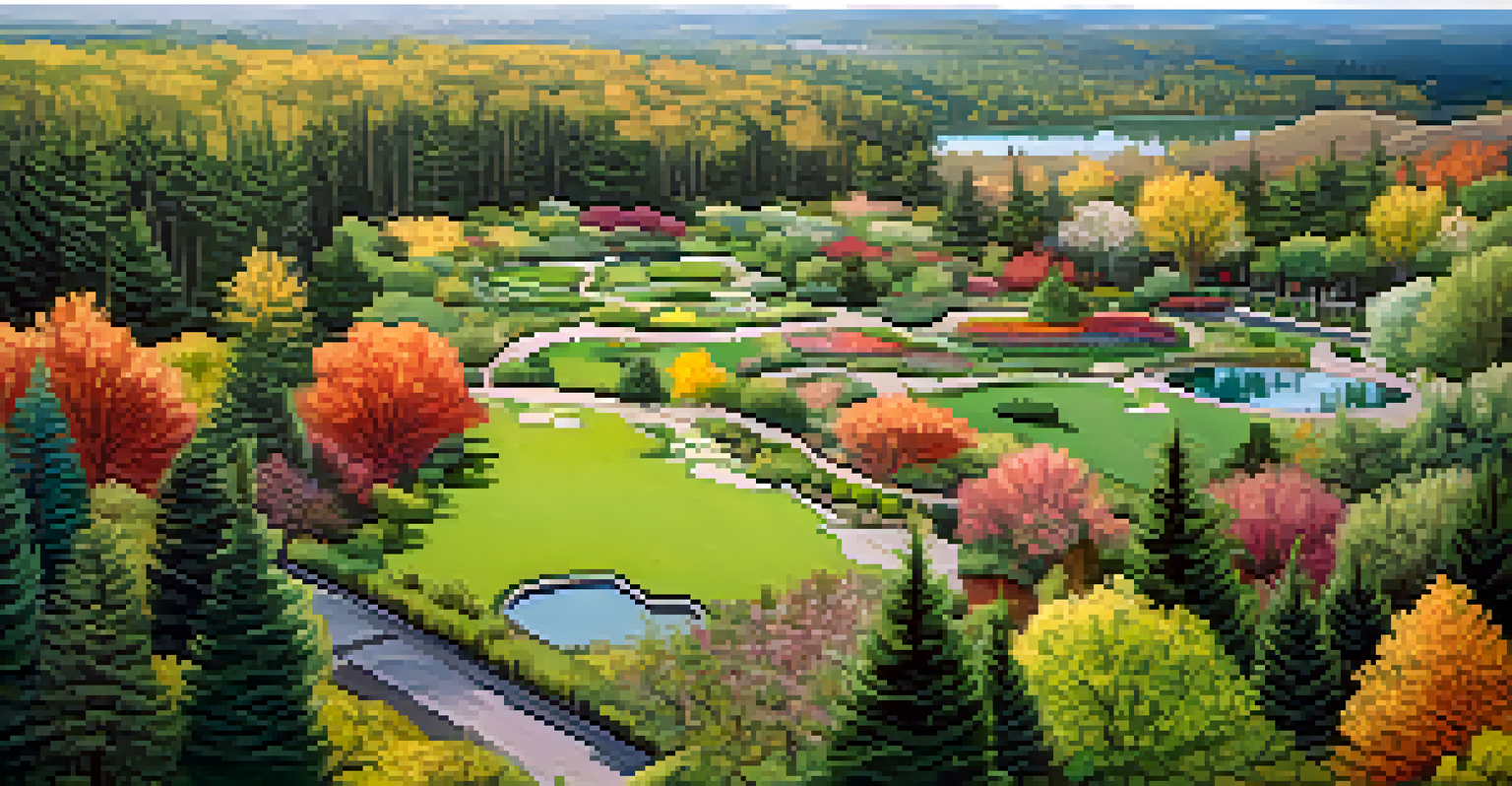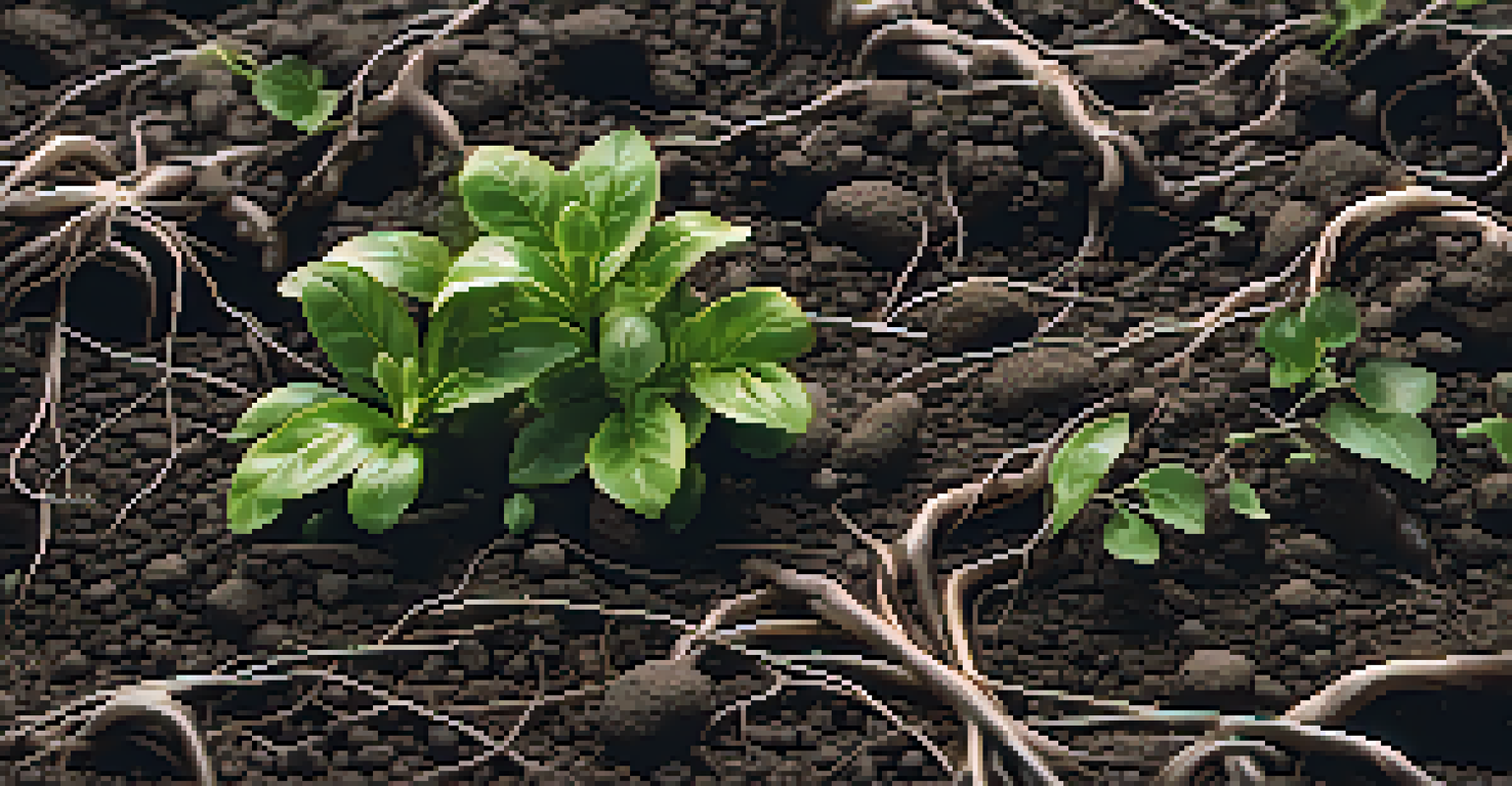How to Choose the Right Plants for Your Landscape Design

Understand Your Climate and Hardiness Zone
Before diving into plant selection, it’s vital to understand your local climate and hardiness zone. This zone indicates which plants are likely to thrive in your area based on temperature extremes. For instance, a plant labeled as hardy in zone 5 may not survive in zone 3's colder winters.
The earth has music for those who listen.
Consulting resources like the USDA Plant Hardiness Zone Map can be a game-changer. This tool helps you identify the best plants for your garden that can withstand local conditions. Remember, choosing plants suited for your climate is the first step to a thriving landscape.
Additionally, consider microclimates around your property, such as shaded areas or spots that receive full sun. These subtle variations can influence plant performance, so taking the time to assess them will pay off in the long run.
Assess Your Soil Quality and Type
Soil is the foundation of any landscape, and understanding its quality and type is crucial. Different plants have varying soil preferences, including pH levels, drainage capabilities, and nutrient content. For example, succulents thrive in sandy, well-drained soils, while ferns prefer more moisture-retentive conditions.

Conducting a simple soil test can provide valuable insights into your garden’s composition. Local extension services often offer testing kits, which can help you determine what amendments your soil may need. Knowledge of your soil will help you select plants that will flourish.
Know Your Climate and Soil
Understanding your local climate and soil quality is essential for selecting plants that will thrive in your landscape.
Once you know your soil type, you can choose plants that naturally thrive in those conditions. This not only contributes to a healthier garden but also reduces the need for extensive maintenance and additional resources.
Consider Sunlight Availability in Your Landscape
Light plays a crucial role in plant growth, so assessing sunlight availability is essential. Observe how different areas of your landscape receive sunlight throughout the day. Some plants, like tomatoes, require full sun, while others, such as hostas, thrive in shade.
Gardening adds years to your life and life to your years.
Creating a sun map by charting sunlight patterns can be incredibly helpful. This visual tool can guide you in selecting and positioning plants according to their light needs. It ensures that each plant gets the optimal amount of sunlight for healthy growth.
Remember that light conditions can change with the seasons, so consider how these changes might affect your plant choices. By selecting plants suited to their specific light conditions, you’ll foster a vibrant and resilient landscape.
Evaluate Maintenance Requirements of Plants
When choosing plants, it’s important to consider how much time and effort you can realistically dedicate to maintenance. Some plants require regular pruning, watering, and feeding, while others are low-maintenance and can thrive with minimal care. For example, native plants often require less upkeep than exotic varieties.
Think about your lifestyle and how much time you can commit to gardening. If you prefer a more hands-off approach, opt for hardy, drought-resistant plants that need less attention. This approach can lead to a more enjoyable landscape experience.
Assess Sunlight and Maintenance Needs
Evaluating sunlight availability and maintenance requirements helps ensure you choose plants that fit your lifestyle and garden conditions.
Ultimately, selecting plants that match your maintenance preferences will allow you to enjoy your garden without feeling overwhelmed. Plus, it can create a more sustainable landscape that flourishes naturally over time.
Define Your Landscape Aesthetic and Style
Your landscape should reflect your personal style, so take time to define the aesthetic you want to achieve. Whether you prefer a modern, minimalist look or a lush, cottage garden vibe, the right plant choices can help bring your vision to life. Consider elements like color, texture, and form when envisioning your landscape.
Creating a mood board with images of your desired landscape can be a helpful visual guide. This can help you narrow down plant selections that complement your style. For example, if you love vibrant colors, incorporating flowering plants like daylilies or zinnias could be ideal.
Ultimately, your landscape should be a reflection of you. By choosing plants that align with your aesthetic vision, you’ll create a space that you love and enjoy spending time in.
Plan for Seasonal Interest and Diversity
A well-designed landscape should offer visual interest throughout the seasons. To achieve this, consider incorporating a variety of plants that bloom at different times or offer unique foliage in fall and winter. For instance, evergreens can provide structure during the cold months, while flowering perennials add color in spring and summer.
Mixing plants with different shapes, sizes, and colors can create a dynamic landscape that evolves over time. Adding a few ornamental grasses can introduce movement and texture, enhancing your overall design. The goal is to create a landscape that captivates the eye all year round.
Define Your Landscape Style
Creating a landscape that reflects your personal aesthetic involves selecting plants that align with your desired colors, textures, and seasonal interest.
Don’t forget to include plants that attract local wildlife, such as butterflies and birds. This not only adds beauty but also supports local ecosystems, making your landscape both engaging and environmentally friendly.
Consult with Local Experts and Resources
When in doubt, don’t hesitate to reach out to local gardening experts or extension services. They can provide valuable insights into the best plants for your area, as well as tips on care and maintenance. Local nurseries often have knowledgeable staff who can direct you to plants that flourish in your specific conditions.
Additionally, attending local gardening workshops or community events can enrich your understanding of regional plants and design techniques. Engaging with fellow gardening enthusiasts can also inspire new ideas and approaches for your landscape.

By tapping into these resources, you’ll build a greater knowledge base and increase your chances of creating a successful, thriving landscape that reflects your personal style.